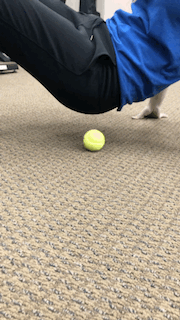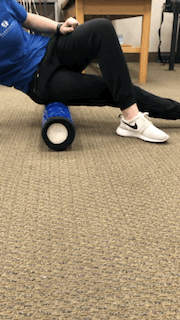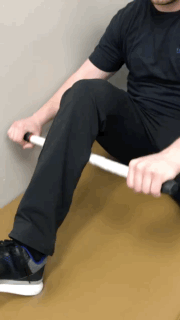Part of your physical therapy treatment will be what we refer to as manual therapy, which is when your soft tissues are massaged and stretched directly. By hand, or with the aid of rollers or specialized tools, your licensed therapist will perform these treatments as a part of your visit. Along with office treatments, there are also some manual techniques you can do at home. These simple techniques can provide pain relief and speed up your recovery. Patients who see the most successful results from their physical therapy are those who diligently follow their home exercise program. Having said that, here are three techniques you can do at home all on your own to get relief.
This first technique focuses on the glutes and makes use of none other than a tennis ball. Patients with tight glute muscles, sciatica, or piriformis syndrome can benefit greatly from this exercise. First, get a tennis ball and place it on the floor. Remember when you used to do a crab walk when you were in fourth grade? You’ll need to hoist yourself into this “crab” position with the ball beneath you. Lower yourself down on to the ball to apply medium pressure as you allow the ball to roll over the entire glute area on one side. This may look a little silly, but it can provide some serious relief!
For the second technique you’ll need a foam roller. If you don’t happen to have one of these already laying around the house, they are available to buy online or can be found at retailers like Target. Using a foam roller like this will help to alleviate hip pain and loosen up the IT band. Placing the foam roller on the floor, sit down on the roller and extend one hand behind you. Your other hand will rest on your thigh. Position the outside of your hip on the roller. Extend your legs out, placing one foot slightly in front of you, planted on the floor. Begin rolling your body back and forth over the foam roller.
The last exercise utilizes something that is likely in your kitchen, a rolling pin. This technique can actually help relieve pain from plantar fasciitis and loosen the calf muscles. While sitting on the floor with both legs in front of you, bend the knee of one leg and plant that foot down on the floor creating a space for your rolling pin. Use the rolling pin to apply pressure rolling up and down your calf muscle. This technique feels great and can actually provide a lot of relief for pain in your foot! Additionally, the rolling pin can also be used on the arch of your foot to relieve pain associated with plantar fasciitis. To do this, simply place the rolling pin on the floor, put your foot on the pin and roll it back and forth.
Post written by: Tom Farnsworth, PT



